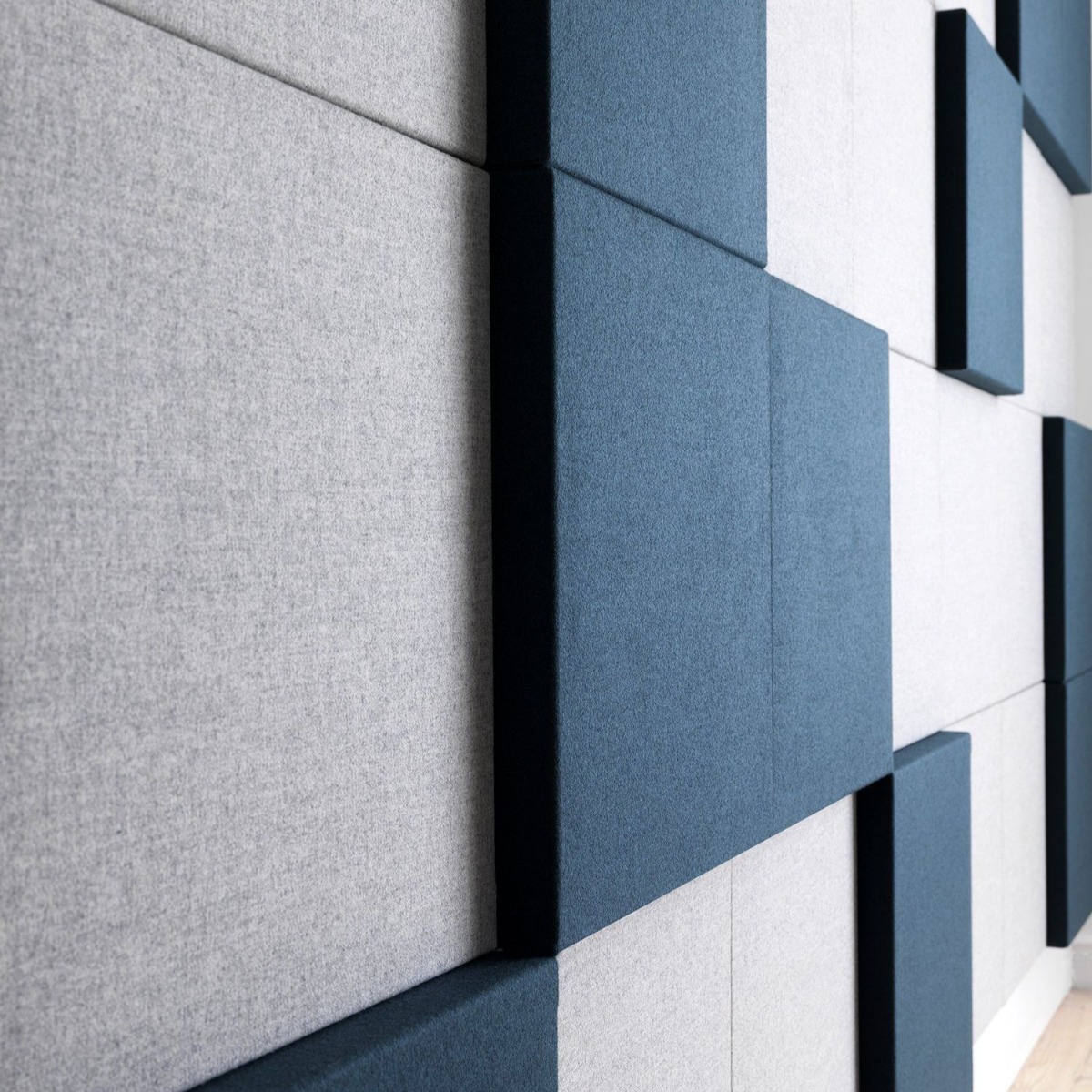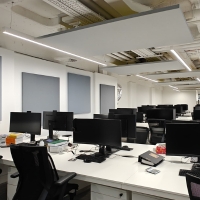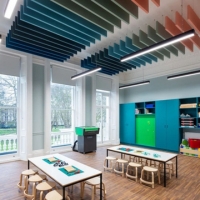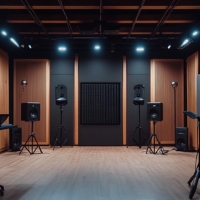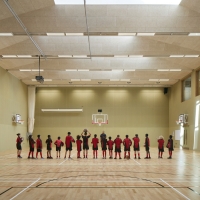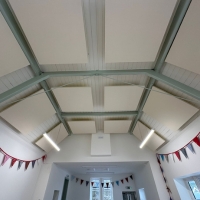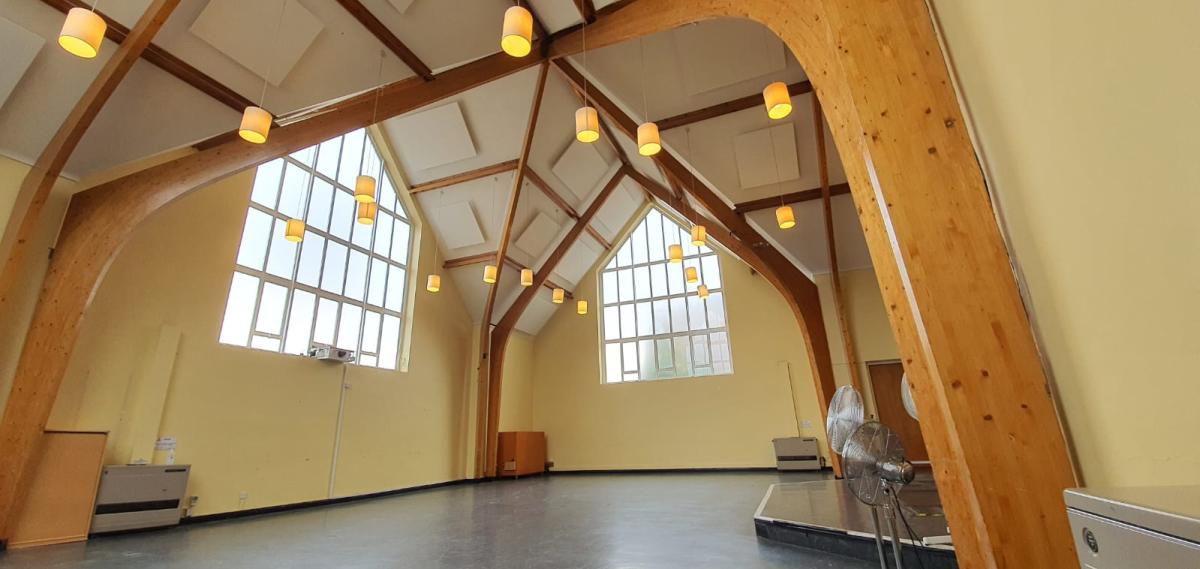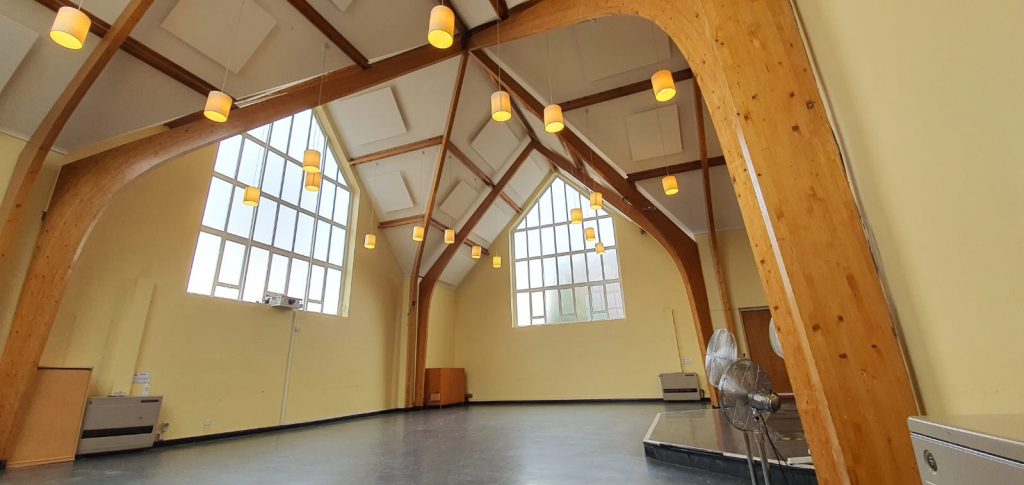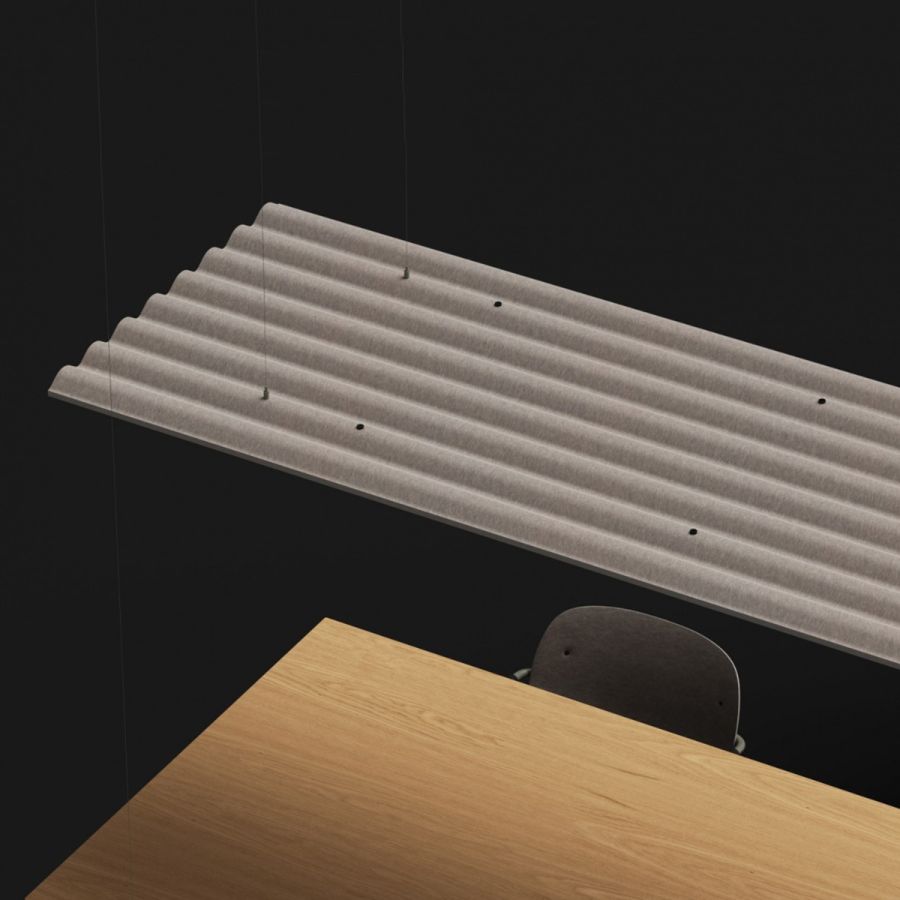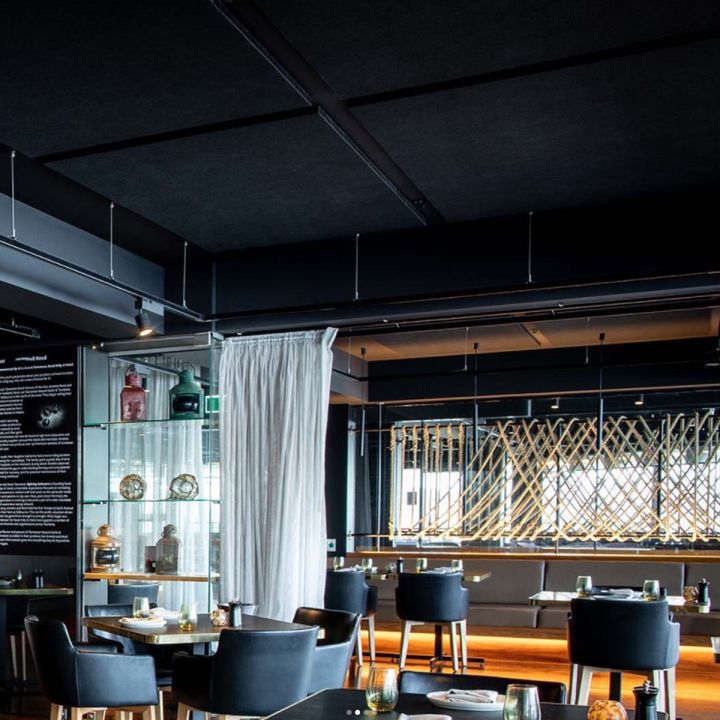
Only sustainable products
Configurable products
Installation available
Free acoustic advice
Village Hall Acoustics Guide: Improving Community Spaces
Village halls are important places in many communities, hosting local meetings and fun events. But these spaces often have a common problem: poor sound quality. Let's look at how to make the sound better in these community buildings.
Key Points
| Aspect | Details |
|---|---|
| Common Sound Problems | Too much echo, hard to hear speech clearly |
| How to Check | Listen carefully, ask users, get expert help |
| Solutions | Ceiling panels, wall treatments, movable screens |
| DIY Options | Fabric-covered insulation, soft furnishings |
| Professional Help | Custom-designed treatments, expert installation |
Understanding the Sound Challenges
Village halls usually have big, open spaces with hard surfaces that create sound problems. These issues can make it hard for people to hear clearly during events or meetings. Common sound problems in village hall acoustics include:
Common Sound Problems in Village Halls
- Too much echo: Sound bounces around, making it confusing
- Sound reflections: Changes the original sound, makes it less clear
- Hard to understand speakers: Difficult to hear clearly during events
- Noise from other rooms or outside: Interrupts activities in the main hall
- Uneven sound: Sound quality changes depending on where you are in the hall
These problems come from how the hall is built and what it's made of. Hard floors, bare walls, and high ceilings make sound bounce around the room instead of being absorbed. This can make it hard for people to understand speakers or enjoy music. The mix of these factors often makes the room sound 'boomy' or 'echoey', which can be especially tough for people who don't hear well.
Checking Your Hall's Sound Needs
Before fixing things, it's important to understand your hall's specific sound challenges. Here's how you can start:
1. Listen carefully during different events. Notice where sound echoes or where it's hard to hear clearly. Pay attention to how sound changes in different parts of the hall.
2. Ask regular users about what they experience. They might notice issues you haven't. You could make a simple survey to get feedback from lots of people.
3. Think about getting a professional sound check. This can give you detailed information about your hall's sound, including how long sound takes to fade and how clear speech is.
4. Test the sound with different types of events. A space that's good for talking might not be great for music, so it's important to check how versatile the hall is.
Sound Improvement Solutions
Once you know the problems, it's time to look at solutions. There are several ways to improve village hall sound, from simple DIY fixes to professional installations. The key is to find a balance between making sound better and keeping the character of your community space.
Ceiling Treatments
Hanging sound panels can really help reduce echo and improve overall sound quality. These panels absorb sound waves that would otherwise bounce off the ceiling. They work especially well in halls with high ceilings, where a lot of the echo problems happen.
The De Vorm Mute Flow Floating Ceiling Panel is a great choice for village halls. It's good at absorbing sound and looks modern too. These panels can be hung at different heights to look interesting while making sound better.
Wall Treatments
Sound-absorbing wall panels are another good solution. They can be placed around the room to absorb sound and reduce echo. Wall panels are especially useful for fixing specific problem areas, like corners where sound tends to bounce a lot.
The Ecophon Akusto One SQ Acoustic Wall Panels are popular. They come in different colors, so you can improve sound while making your hall look nice. These panels can be arranged in patterns to create an attractive look while helping with sound.
Movable Solutions
For halls that need flexible village hall acoustics options, movable sound solutions can be great. Sound screens can be moved around as needed, providing targeted sound absorption for different events. These are especially useful for spaces that host many different activities with different sound needs.
DIY Sound Treatments
If your village hall doesn't have much money to spend, there are some DIY options to think about:
1. Fabric-wrapped insulation boards: You can make these by wrapping sound insulation in fabric and putting them on walls. This cheap solution can be made to match your hall's colors.
2. Smart placement of soft furnishings: Adding curtains, rugs, and soft furniture can help absorb sound. Heavy curtains on windows can also reduce noise from outside.
3. Bookshelf sound diffusers: If your hall has built-in shelves, filling them with books of different sizes can help spread sound waves and reduce echo.
Professional Sound Solutions
For the best results, professional sound solutions are often the way to go. These can include:
1. Custom-designed treatments made for your specific space, taking into account your hall's unique design and how it's used.
2. Professional installation services to make sure sound treatments are placed correctly and work well.
3. Solutions that combine sound improvement with other things, like lighting or air flow.

Sonio offers professional fitting services to make sure your sound solutions are installed correctly for the best results. Their experts can check your space and recommend the most effective treatments for your specific needs.
Balancing Sound for Different Uses
Village halls often host many types of events, from quiet meetings to lively parties. To cater to these different needs, consider:
1. Adaptable solutions that can be adjusted for different events, like movable sound panels or curtains.
2. Variable village hall acoustics that let you change the room's sound as needed, possibly using technology like electronic sound masking.
3. Dividing the space to create areas with different sound properties, suitable for various activities.
Custom sound solutions can be designed to meet the specific needs of your multi-purpose space, ensuring good sound quality for all types of events.
Real-World Results
Many village halls have seen big improvements after fixing their sound. Users often report:
Better Speech Clarity
Easier to hear during meetings
Improved Sound Quality
Better sound for music events
More Bookings
More people want to use the hall
These improvements often make community members happier and can even lead to more money for the hall because it works better for different events.
Conclusion: Making Your Community Space Better
Improving the sound in your village hall can make a big difference. It can turn a noisy, echoey space into a versatile place that's great for all kinds of community events. Whether you choose DIY solutions or professional treatments, taking steps to fix sound issues will help everyone who uses the hall.
Remember, good sound isn't just about comfort – it can also make your community space more useful and valuable. By investing in sound treatments, you're investing in the future of your village hall and the experiences of everyone who uses it. Better sound can lead to better communication, more enjoyable events, and a stronger sense of community connection.
When planning your sound improvements, think about the long-term benefits and the different needs of your community. A well-designed sound solution can adapt to various uses, from small gatherings to big celebrations, ensuring your village hall remains an important place for years to come.
Ready to improve your village hall's sound? Check out sound-absorbing wall panels and other solutions to start making your hall sound better. With the right approach, you can create a space that sounds as good as it looks, making every event and gathering in your community better.
[related_products is_auto_added="1"]About Sonio
Our story begins well before the inception of the Sonio brand, with our past deeply rooted in the interior acoustics industry. For the past decade we have specialised in the design, supply and installation of comprehensive acoustic solutions. Sonio was formed to operate as a supply only option for customers who are comfortable or willing to install products themselves.
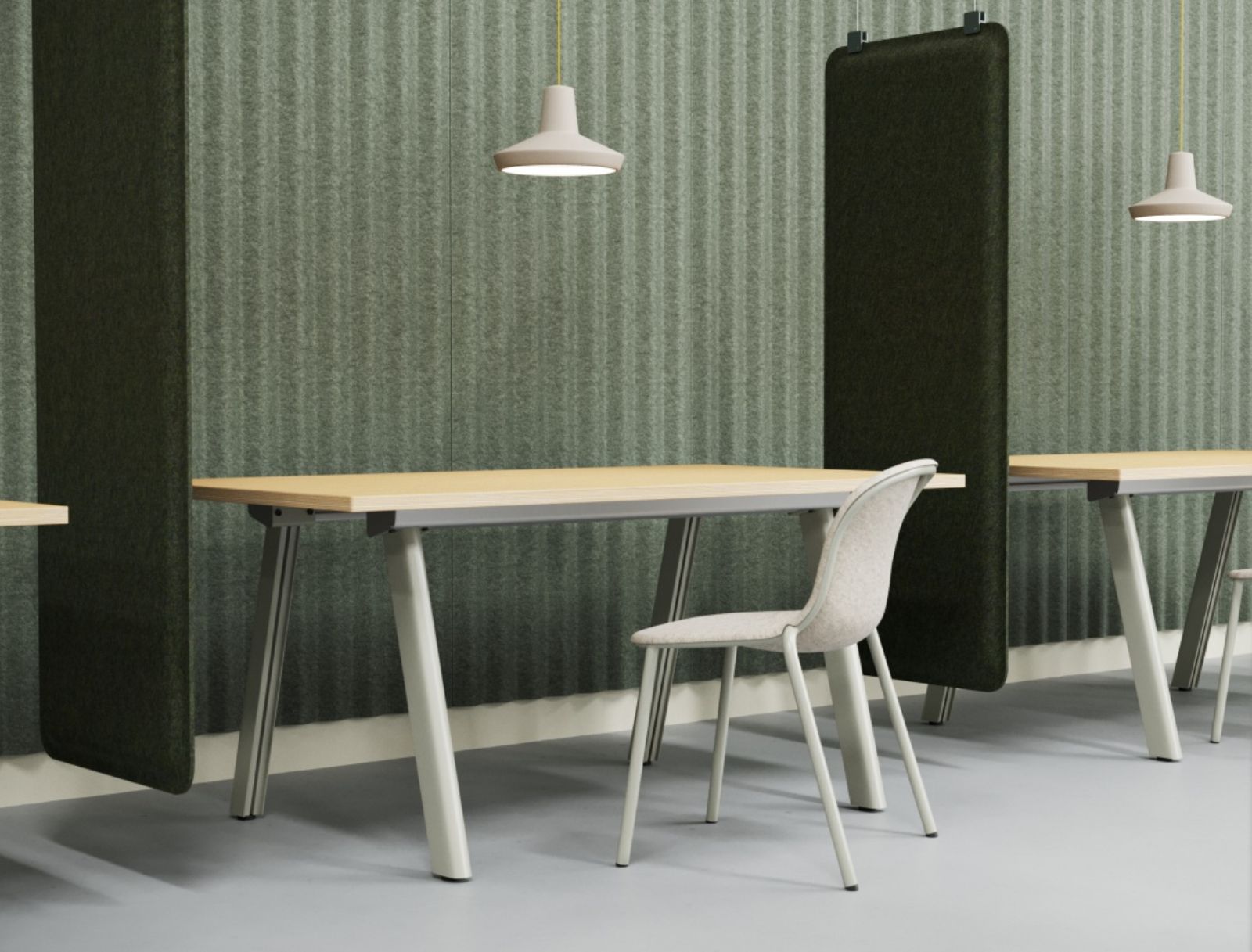 Acoustic Wall Panels
Acoustic Wall Panels 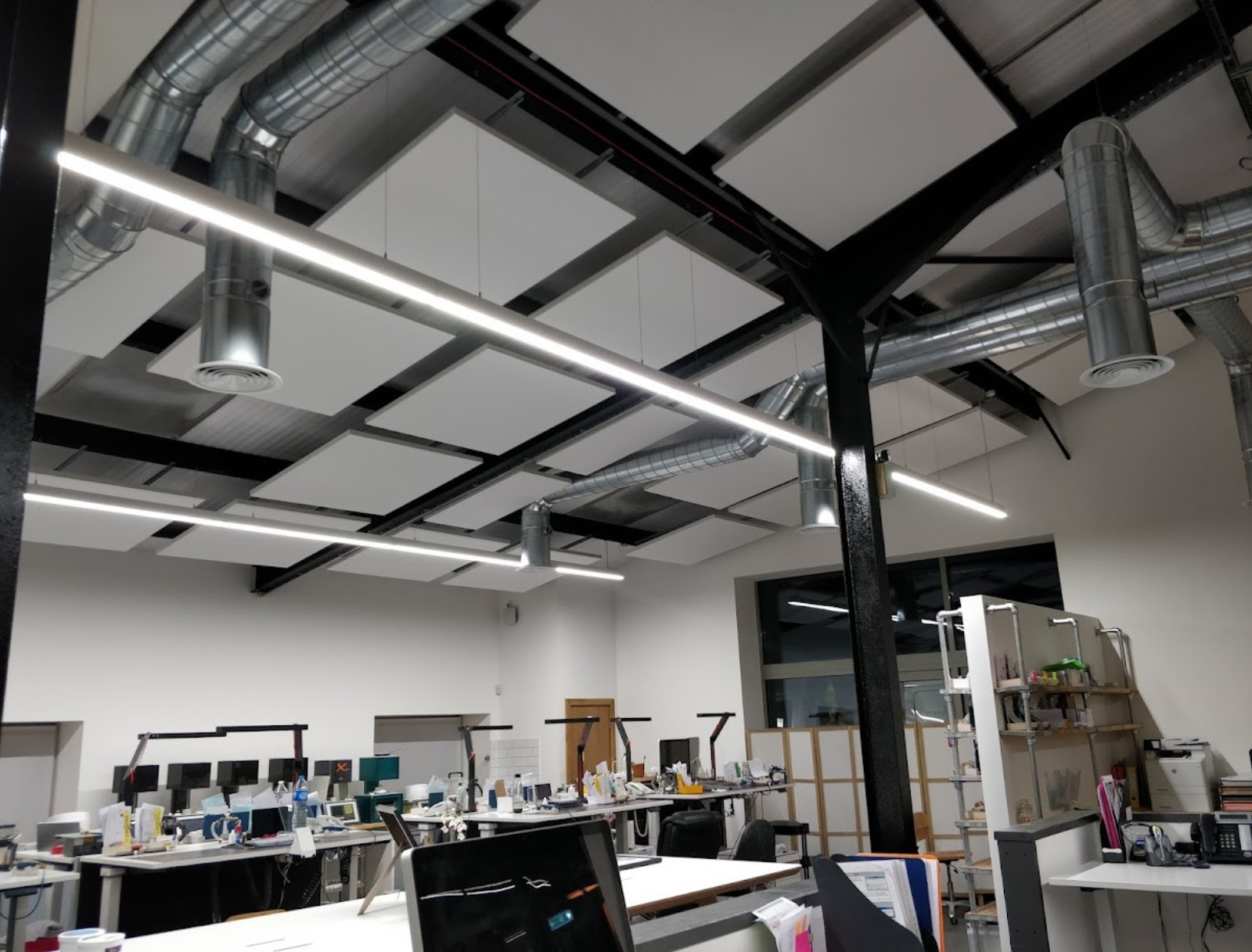 Acoustic Ceiling Panels
Acoustic Ceiling Panels 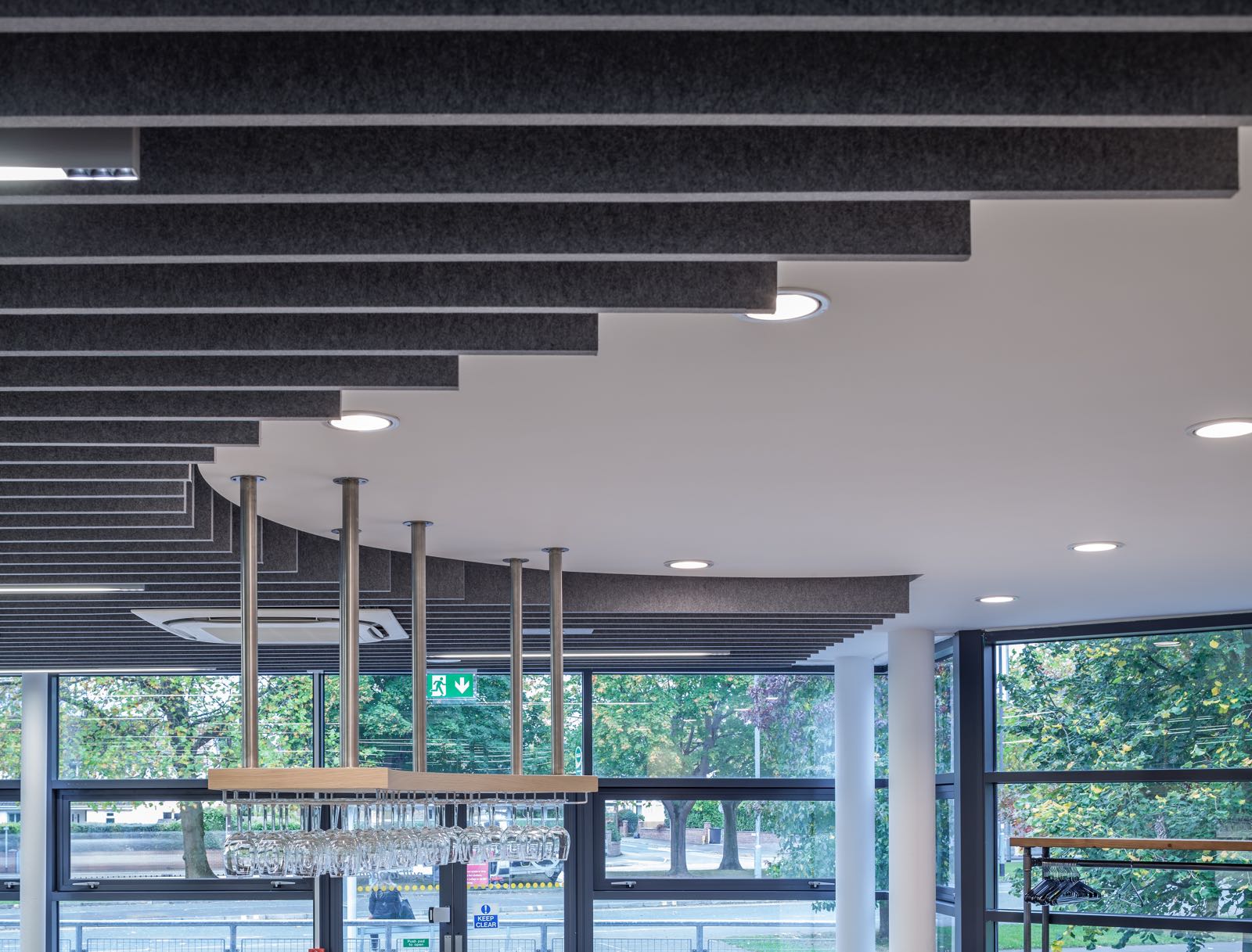 Acoustic Ceiling Baffles
Acoustic Ceiling Baffles 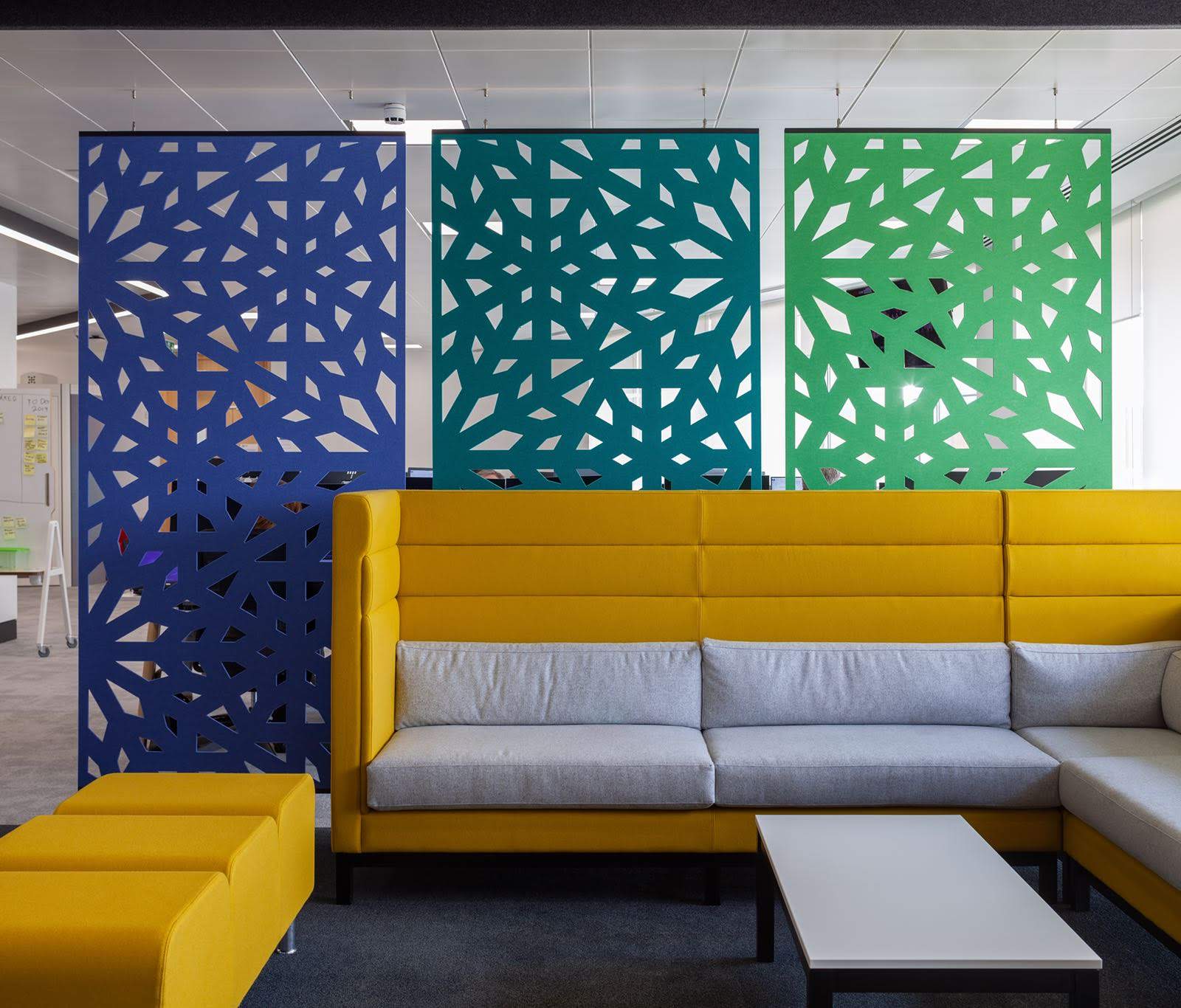 Acoustic Screens
Acoustic Screens  Acoustic Fabric
Acoustic Fabric 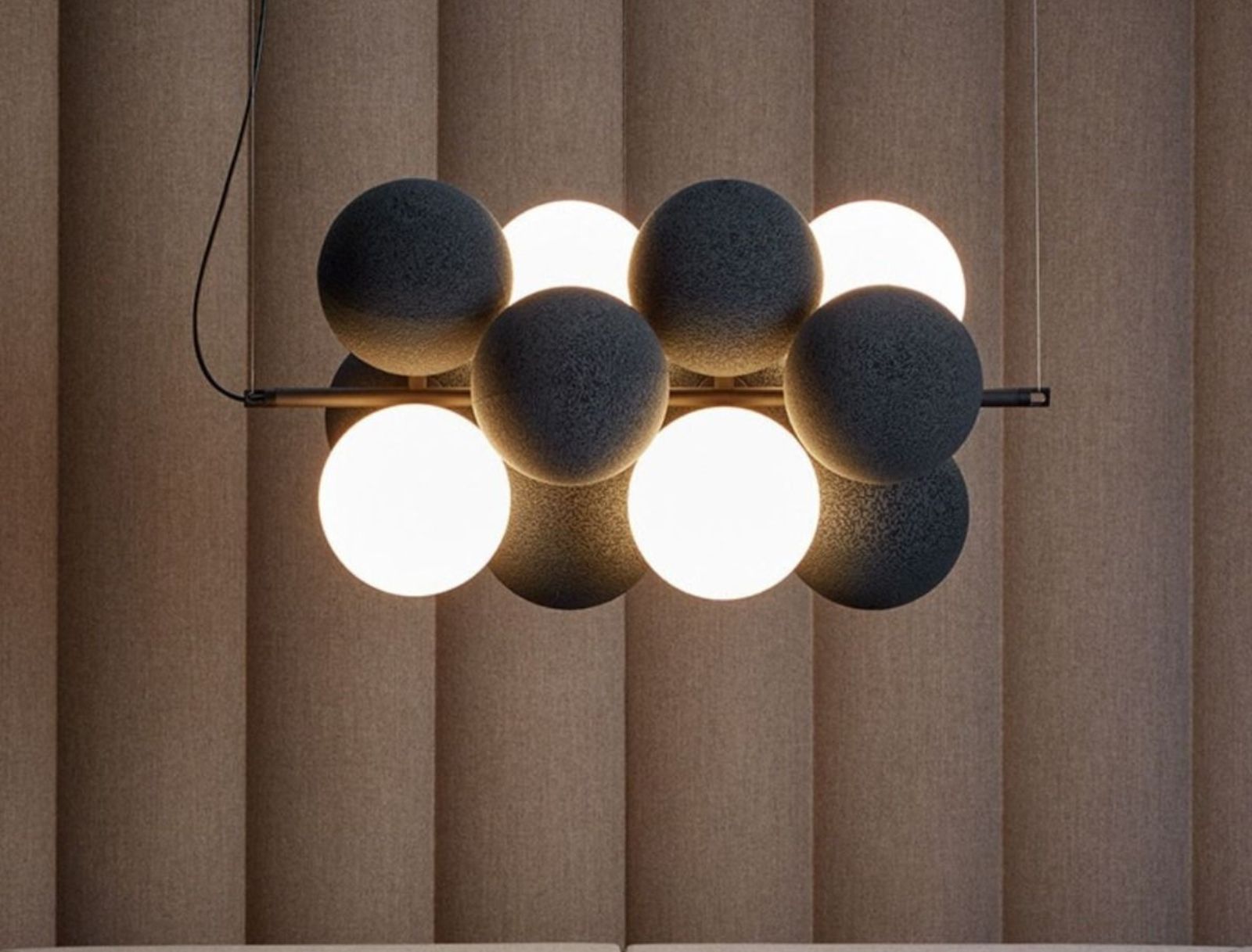 Acoustic Lighting
Acoustic Lighting 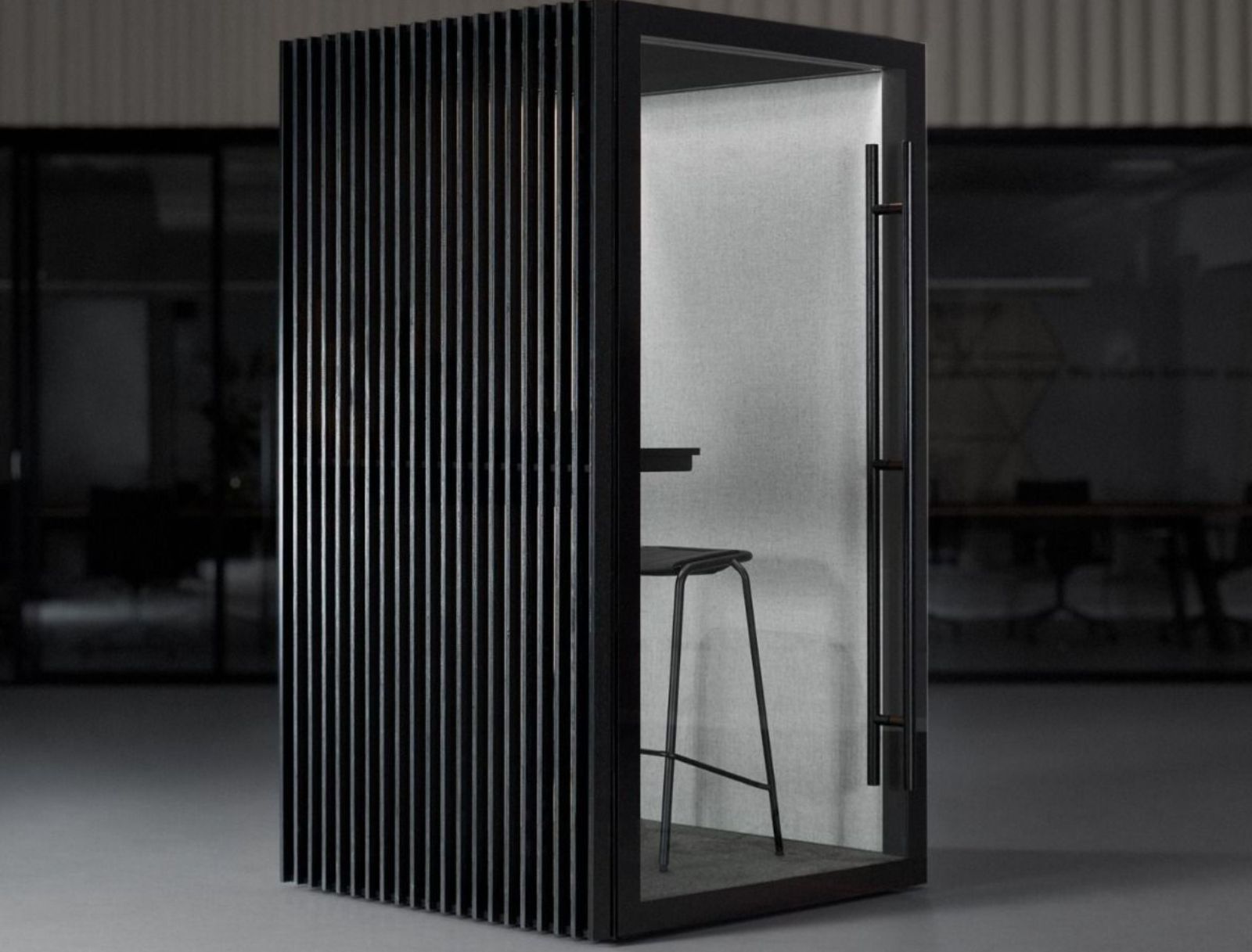 Acoustic Booths and Pods
Acoustic Booths and Pods  Acoustic Panel Accessories
Acoustic Panel Accessories 